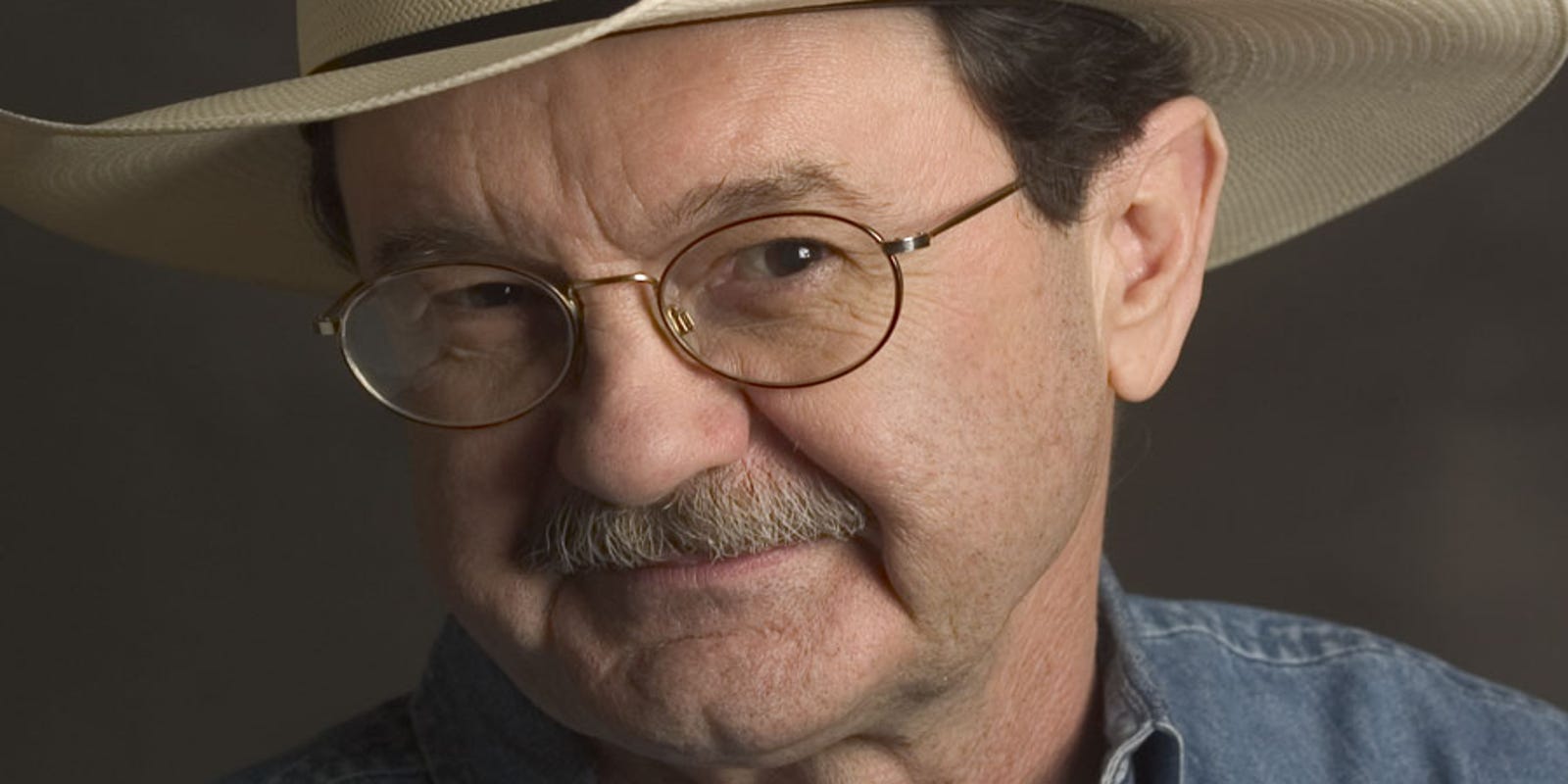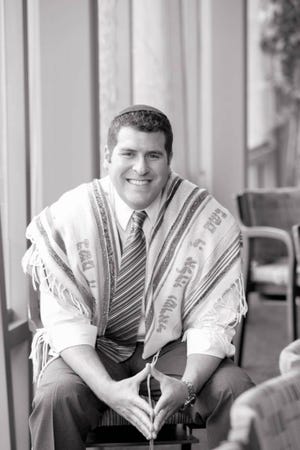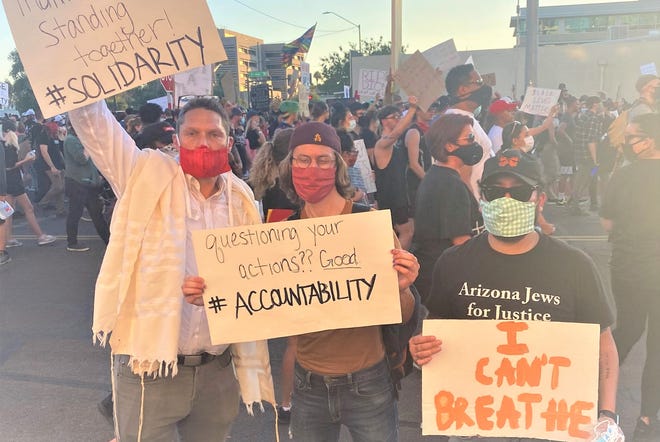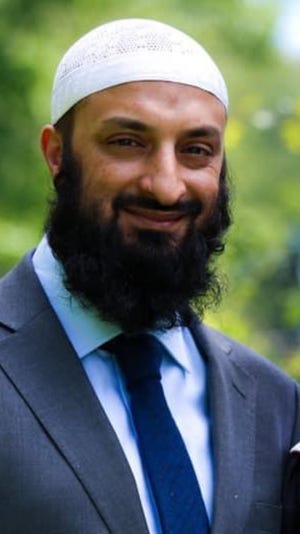|
Hogan portrays himself as a
moderate who cares about minorities, but his decisions tell a different
story—particularly his decision to cancel Baltimore’s Red Line.
By SHERYLL CASHIN
07/18/2020 07:00 AM EDT
Sheryll Cashin is a law professor
at Georgetown University and is the author of Loving: Interracial Intimacy in
America and the Threat to White Supremacy. She’s currently working on a book
about the role of residential segregation in producing racial inequality.
In the wake of George Floyd’s
killing, the term “structural racism” has moved from the academic world into
the public conversation — a shorthand way to talk about why Black Americans
can do everything right and still find themselves with less income and wealth
than white Americans of similar education, consigned to live in poorer
neighborhoods, with fewer opportunities, more repressive policing and worse
life outcomes.
If the idea still sounds abstract
to policymakers in Washington, they don’t have to look far to observe its
realities. They can just drive an hour north, to Baltimore — and see what is
not there.
Sorely missing is a long-planned
east-west transit route that would connect isolated Black Baltimore
neighborhoods to downtown and suburban job centers and to other rail lines.
In 2014, the Obama administration offered Maryland a selective “New Starts”
grant of $900 million to finally build what was called the Red Line — a
project that would not only have connected thousands of Black Marylanders to
better jobs but would also create a comprehensive transit system that might
restart the Baltimore region’s economy and improve race relations by building
literal connections between communities.
Today, there’s no construction of
rail in Baltimore. The $900 million has been returned to the federal
government. The state of Maryland redirected $736 million of state funds
originally set aside for the Red Line to building roads instead — in
predominantly white areas. And the U.S. Department of Transportation, which
was supposed to investigate whether that decision was illegal and
discriminatory, quietly closed the case without making any public findings.
Transportation investment and
disinvestment have been central in Baltimore’s long saga of racial
segregation and inequity, and the Red Line was the most recent chapter. Since
Gov. Larry Hogan killed the Red Line in 2015, it has become a rallying cry
for transit and racial-justice activists in Baltimore and beyond.
But the full extent of the
injustice is just coming to light. Material obtained by a legal clinic I
worked with at Georgetown Law School, through Maryland’s
freedom-of-information statute, shows that federal officials acknowledged the
potential racial impact of the decision to cancel the Red Line and the
possibility that the decision violated civil rights law — and then for
unclear reasons, dropped their investigation.
It was Hogan’s decision to cancel
the Red Line. To give an idea of how insidious structural racism can be, as a
matter of politics, consider that Hogan is considered one of the “good guys”
among national Republican governors. He has a high approval rating in a blue
state and is considering running for president in 2024. Hogan is also a Trump
critic who advocates for a bigger-tent GOP that is “inclusive” and avoids
“divisive rhetoric.”
But his budgetary treatment of
Baltimore tells a very different story — one that is woven deeply into
decades of discriminatory American policy.
In 1965, urban planners mapped
routes for six rapid-transit lines that would radiate from downtown Baltimore
to the suburban edges. But white suburbanites massively resisted both transit
and open housing policies that would enable Blacks to move to their
neighborhoods. As a result, Baltimore County grew whiter and Baltimore city
blacker and more isolated from jobs and amenities. Plans for a comprehensive
rail system remained a paper dream and only two transit lines were built.
A 1968 map of the Baltimore
metropolitan area's proposed rapid-transit lines following an intensive
federally funded study. | Metropolitan Transit Authority, via
RoadsToTheFuture.com
What got built and where is
telling. One of the lines is a light-rail route that largely serves whites in
the northern reaches of the city and suburbs who wish to travel south to
Baltimore’s tourist-centered Inner Harbor and the retro-style Camden Yards
baseball stadium; it continues south to the Baltimore/Washington International
Thurgood Marshall Airport. The other is a subway line that runs 15 miles
northwest from Baltimore to Owings Mill though the line stops well short of
that suburb’s signature town center and shopping mall, rendering it not
entirely effective for commuters. These two lines do not even connect to each
other.
In 2002, Gov. Parris Glendening, an
advocate of so-called smart growth which integrates transit and housing
development, supported new planning for what would be called the Red Line. (The name is ironic for a
proposed corridor in which the majority of residents are Black Americans
living in historically segregated and “redlined” neighborhoods.)
The proposed 14-mile line included
a 3.4-mile tunnel that would have allowed riders to glide under congested
downtown streets where cars crawl at less than 12 mph at peak periods.
Planners also proposed stops connecting to Amtrak and the regional MARC train
routes, to create a comprehensive rail system. Baltimore was more than a
century overdue for racial healing and the city was going to be united, at
least physically, through transit.
The planning process did begin to
repair trust and relations between the city and its Black neighborhoods and
between those neighborhoods and predominantly white ones. Dozens of
individuals, organizations and state and local government officials signed
the Red Line Community Compact — a blueprint for ensuring that Baltimore
residents and businesses participated in construction, that the Red Line
improved the environment, and citizens had a voice in fostering
community-centered development.
West Baltimore communities denuded
of commerce were rezoned for mixed uses, anticipating new economic and civic
activity around each station. Each proposed station had an advisory committee
to help shape their neighborhood’s renewal. Edmondson-Westside High School,
for example, was going to train local adults and students to enter jobs in
construction, maintenance and transit operations. One elder advocated for new
trees to beautify their station. Citizens planted many ideas — the kind of
civic roots, if allowed to grow, that might discourage violence in poor
neighborhoods.
By 2015, all the needed planning,
engineering, environmental and health impact assessments, financing and
political compromise for the Red Line route had been completed. The state of
Maryland had spent $288 million on planning and right-of-way acquisitions.
The Maryland General Assembly had approved a gas-tax increase to fund the
project and the state had committed to pay $1.2 billion from the State
Transportation Trust Fund for the state’s share of construction costs.
Maryland had applied for and won the $900 million “New Starts” grant from the
federal government. Construction was set to begin later in 2015.
In Jan. 2015, Gov. Hogan took
office. Less than six months later, in June 2015, he announced that the Red
Line was canceled.
Hogan, founder of an eponymous
commercial real estate business, was an established skeptic of transit rail,
which he deemed too expensive, and a believer in highway asphalt. In his
first bid for governor, he argued against light rail — which opposing
suburbanites sometimes derided as “loot rail” — and strenuously advocated for
roads. Rail, no; roads, yes — polar positions that helped to defeat Black
Democrat, Anthony Brown.
As governor, Hogan’s decision to reallocate funds away from the Red
Line came two months after the uprisings in Baltimore over the death of
Freddie Gray after mistreatment by Baltimore police officers. The violence
had put Baltimore at the center of national debates and protests about
anti-Black policing and disinvestment in Black neighborhoods. But Hogan
called those who vandalized "thugs," and complained aloud about the
$20 million the state had to spend in response to the protests. He all but
used this extra cost to further justify canceling the Red Line.
Hogan dismissed the project as
"a wasteful boondoggle" and defended rescinding it because he
“oppose[d] wasteful and irresponsible spending on poorly conceived projects.”
The planned 3.4-mile tunnel provoked him the most. He viewed it as a costly
indulgence, even though running the Red Line under the worst of Baltimore
traffic in order to facilitate “rapid” transit was a central feature of a
system designed to dramatically reduce commute times and ease downtown
congestion for everyone.
He returned the $900 million
selective federal grant for the project and reallocated all of the state
money that had been earmarked for the Red Line's first construction phase —
$736 million — to road projects in exurban and rural areas. In the end, not a
single road or pothole in Baltimore would be paved with the money that had
been set aside for the Red Line.
Yet not all light rail got the ax.
Hogan did not cancel the Purple Line, which will open in 2022 and run through
Prince George’s and Montgomery counties in wealthier suburbs of Washington
and connect to D.C.'s Metro subway system.
The Purple Line and Hogan’s other
budgetary priorities at the time of the Red Line cancellation suggest a
pattern of favoring white communities over Black communities in the
allocation of public funds. Upon taking office he declared that Baltimore was
“declining rather than improving,” and cut $36 million from its schools
budget, but approved $30 million to build a youth jail in the city — a
breathtaking message signaling what Hogan thought of the city and its youth.
Hogan also cut or lowered tolls on
suburban highways and bridges while Baltimoreans endured fare increases on
buses, rail and commuter lines. He supported expensive road projects of
dubious necessity in sparsely populated rural areas while not scheduling
needed road projects for Baltimore.
For Black Baltimoreans and allies
watching, the pattern of investing public funds in white areas and
disinvesting from Black neighborhoods could not have been more obvious.
The racial injustice of these
decisions mobilized civil rights groups. The NAACP Legal Defense Fund filed a
complaint with the federal Department of Transportation, arguing that whites
received a 228 percent net increase in benefits from the Red Line
cancellation and reallocation while Black Americans lost benefits at minus
124 percent and that this racial disparity violated Title VI of the Civil
Rights Act of 1964.
Title VI is a key provision in U.S.
civil rights law, one that holds decision-makers accountable for the effects
of their decisions, not just their avowed rationale. It prohibits
discrimination on the basis of race, color or national origin in any program
or activity receiving federal financial assistance and prohibited racial
discrimination may be intentional or unintentional. Most critically, the
result of allegedly neutral practices can have a “disparate impact” on a
racial group, and Title VI, as implemented in federal regulations, renders
that illegal.
The iconic distressed neighborhoods
of East and West Baltimore along the proposed corridor of the Red Line, on
average, were 80 percent Black, 30 percent poor and 65 percent female-headed.
Forty-four percent of residents along the planned corridor did not own a car.
Fewer than 2 percent of jobs in Baltimore are located in Black neighborhoods
along the proposed Red Line corridor. For carless residents of those neighborhoods, without
the Red Line, commuting to the job-rich parts of the Baltimore region is a nightmare.
The lives of carless single Black
mothers who needed to get children to school and themselves to work were made
incredibly difficult by a maddeningly slow MTA bus system in which a
20-minute car commute would stretch to 90 minutes on the bus. With the Red
Line canceled, they lost the opportunity for nearly halving their commute
times, for gaining a projected 10,000 new jobs in Baltimore that Black
residents might apply for, and for spurring renewal and transit-oriented
development in chronically disinvested Black neighborhoods. Lost, too, was
the possibility of reducing air pollution for the city with the poorest air
quality and highest rates of pediatric asthma in the state.
The Obama administration's
Department of Transportation opened an investigation on the assertions that
appear in the Legal Defense Fund’s complaint and a similar one filed by
Baltimore transit activists. But the Trump administration closed the
investigation without making any findings. In lieu of an investigation of the
joined complaints, it said it would conduct a comprehensive review of
Maryland’s transportation programs for compliance with Title VI.
The Georgetown Law Civil Rights
Clinic sought to find out whether the Transportation Department followed
through with that investigation. In January of this year, the Clinic filed
freedom of information statutory requests with both the Maryland Department
of Transportation and the federal Transportation Department. The Trump
administration has yet to release any material in response to the Freedom of
Information Act request, citing the Covid-19 pandemic for the delay, but this
spring, MDOT disclosed a trove of documents and emails that my dedicated
research assistant and I recently perused.
Most telling were email
communications between U.S. and Maryland officials in 2018. Federal officials
had opened a “Corrective Action” and informed MDOT that it had to conduct a
comprehensive Title VI analysis of its transportation spending. They rejected
MDOT’s initial response, saying it had “simply provided a conclusion that
disparate impacts did not exist,” which was insufficient evidence of
compliance with Title VI. MDOT tried again; in a subsequent email it claimed
that there was no disparate impact violation because “large amounts of both
State and federal funded investments in transit and other transportation
modes closely correlated with the Census tracts with higher minority
population.”
In its answer, MDOT did not
quantify what these “large amounts” were, for what projects or which minority
communities allegedly benefited. It referred to funding formulas and maps
provided in its previous, rejected explanation and offered a link to a previously
published 565-page consolidated report that catalogued where transportation
funds were allocated in given years. Those reports do not mention race at
all. They were not designed to, and did not, assess racial equity.
Perhaps it is true, as MDOT claimed
in its emails, that “minority” census tracts were near road projects in
outlying areas and ostensibly benefited from those road investments and that
the Washington and Baltimore regions, where many “minorities” live, received
“large amounts” of transportation funds. It is also possible the alleged
“large amounts” do not make up the difference from the cancellation of the
Red Line. But we don’t know, because the Trump administration officials
accepted MDOT’s answer at face value and closed the corrective action without
any explanation of its reasoning.
In other words, the Trump and Hogan
administrations never gave a considered response to the Title VI petitioners’
core claim: that in canceling the Red Line and reallocating its funds to
other projects, Hogan and Maryland favored white areas to the detriment of
Black citizens. The citizens and communities that toiled for more than a
decade planning the Red Line, building trust and a multiracial coalition for
renewal, deserved a published, reasoned answer that could be reviewed by a
federal court to determine if the agency’s logic was arbitrary or evaded the
demands of Title VI. There was no opportunity, in short, for any public
accountability.
Two years after rescinding the Red
Line, Hogan did offer Baltimore a consolation project, $135 million for
BaltimoreLink, an ostensibly revamped bus system. It was hardly a substitute,
though, for the $2.9 billion unified rail system that was first envisioned in
1965. Though Hogan claimed the new bus system would be “transformative,”
angry riders complained that commutes worsened as bus lines were eliminated.
The same year Hogan canceled the
Red Line, Baltimore ranked last in the nation on Harvard economist Raj
Chetty's rankings for social mobility of poor children.
This is what structural racism
looks like and it is a product of public policy. For decades, governments
have spent public funds disproportionately on white communities, particularly
those that have more than enough, while excluding Black communities and Black
people from government investments — in mortgages, education, infrastructure
and other services.
One epochal example that shaped
segregation in the Baltimore region and everywhere else African Americans in
the Great Migration landed: The Federal Housing Administration invented the
30-year mortgage to bring homeownership to the white masses. Under this New
Deal policy created by Democrats, from 1934 to 1962 whites received 98
percent of government-insured loans. Blacks were intentionally cut out of
America’s signature wealth-building policy and the suburban American dream.
This explains why today, for every dollar of wealth held by a typical white
family, a typical black family holds 8 cents.
After a century of redlining, urban
“Negro Removal,” intentionally concentrating poor Black Americans in
segregated housing, disinvestment, foreclosures and predation, without an
insistent effort to disrupt a legacy of plunder, the modern descendants of slavery
in Baltimore cannot thrive. Black Democrats are not immune to the zero-sum
politics of segregation. Despite being governed by a series of Black mayors,
a recent equity analysis revealed that Baltimore neighborhoods that are less
than half Black received nearly four times more the investment than
neighborhoods that are overwhelmingly Black.
`
Education is supposed to be a
ladder of social mobility, but education remains separate and unequal in
America. Hogan recently vetoed a bill known as the Blueprint for Maryland’s
Future that would have been a down payment on recommendations to transform
Maryland public education from mediocre to world-class — recommendations from
a commission, known as the Kirwan Commission, that Hogan himself helped set
up.
According to Maryland’s Department
of Legislative Services, Baltimore City Schools are underfunded by $342
million annually, causing Charm City’s children to endure among the highest
student-to-teacher ratios in the state. All told, the Kirwan Commission’s proposals,
after a 10-year phase-in, were estimated to cost $4 billion annually. Last
year, Hogan condemned the Kirwan proposals, dubiously claiming the plan would
demand $6,000 in taxes from every Maryland family. Then the Covid-19 pandemic
gave him a blunt fiscal defense for his veto.
The damage from Covid-19 extends
far beyond the educational system, also wreaking havoc on Maryland’s economy
and government tax revenues and laying bare the effects of structural
inequality on Black lives. Black Americans die from the virus at higher rates
than whites while having less access to health care. And now half of Black
adults are unemployed.
As the pandemic shreds budgets, there is a serious risk that state
investment in elites and preying on Black people for fees and revenue will
worsen.
Repair or reparation of racial
inequality in Baltimore would include funding the Red Line, the proposals of
the Kirwan Commission and other possibilities. Yes, in Baltimore and
elsewhere resources should be reallocated from policing to redress perennial
defunding of Black communities. Other systemic work is also required,
including encouraging rather than discouraging integrated schools and
neighborhoods that offer opportunity to all.
But here’s the crux: Dismantling
unjust budgetary habits and reducing systemic racism will require sacrifices
from white communities that have disproportionately benefited from these
policies for decades. In a revolutionary moment where 96 percent of Americans
are acknowledging that Black Americans face discrimination, are we finally
ready to readjust our spending priorities?
If so, Baltimore’s Red Line would
be a good place to start.
Filed Under: Opinion,
Politics, Baltimore, Letter From ..., Larry Hogan
|






